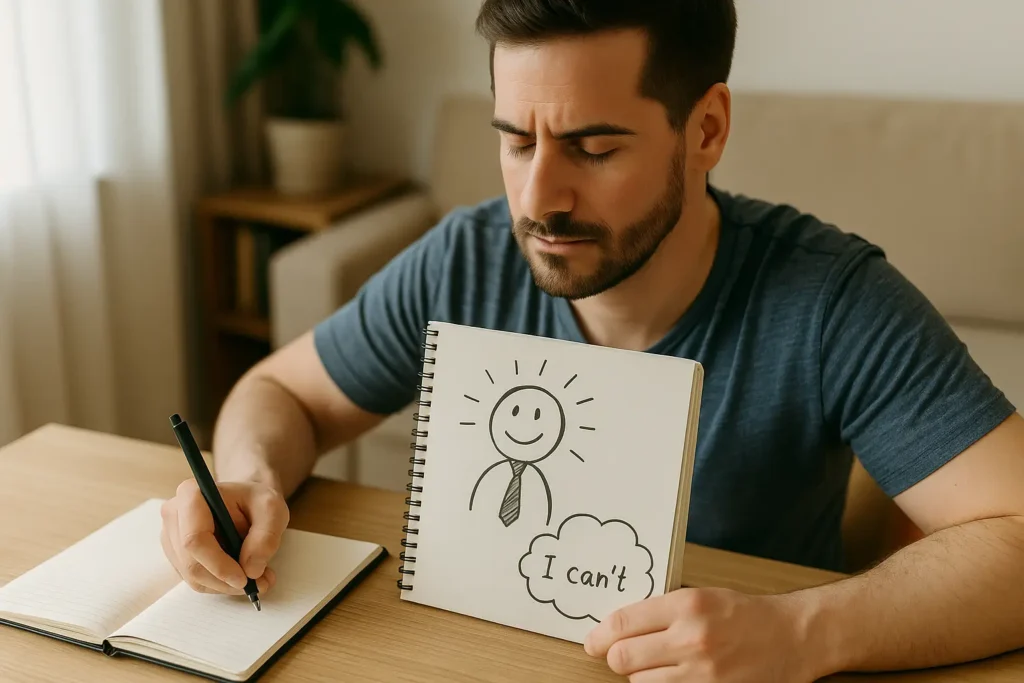
Success on exam day is not determined solely by what you know. While knowledge and preparation are essential, your mindset and emotional state during the test can be just as impactful. Anxiety, lack of focus, or low confidence can sabotage even the most well-prepared candidates. That’s where visualization techniques come in — mental strategies that help you control your thoughts, manage nerves, and walk into the exam room feeling calm, centered, and confident.
Visualization isn’t just a motivational buzzword; it’s a scientifically backed technique used by high-performance athletes, speakers, and professionals across fields. It involves mentally rehearsing situations before they happen — seeing yourself succeed, handling pressure, and making the right decisions. When practiced consistently, visualization can strengthen your emotional resilience and prepare your brain to respond positively under stress.
In the context of competitive exams, visualization helps bridge the gap between preparation and performance. By mentally simulating exam day, you train your mind to act with clarity instead of panic. You reinforce a belief in your ability to succeed. And perhaps most importantly, you create an internal state of confidence that can sustain you through even the toughest moments of the test.
Understand the Science Behind Mental Rehearsal
Visualization techniques are effective because the brain often cannot distinguish between what is imagined and what is real. When you visualize an action — such as entering the exam room or answering a question — your brain activates many of the same neural pathways it would use during the actual experience. This process is known as mental rehearsal, and it helps you build familiarity with the situation before it happens.
For example, athletes frequently visualize their performance before a competition. They see themselves executing each movement with precision and confidence. This mental practice improves reaction time, reduces hesitation, and enhances muscle memory. In a similar way, when you visualize sitting calmly during your exam, reading a question, and confidently choosing the right answer, your brain stores that pattern as a reference.
This technique doesn’t replace actual studying, but it amplifies your ability to use what you’ve learned. Visualization increases emotional control, reduces cortisol levels associated with stress, and boosts self-efficacy — your belief in your own ability to perform well. When practiced regularly, even for just a few minutes a day, visualization becomes a tool for training not just your mind, but your emotional response to pressure.
Build a Visualization Routine Leading Up to the Exam
Like any habit, visualization becomes more effective when practiced consistently. You don’t need to spend hours on it — even five to ten minutes a day can make a significant impact. The key is to create a quiet environment where you won’t be interrupted, close your eyes, and mentally walk through specific parts of exam day. Focus on details. What time do you wake up? What are you wearing? How do you feel when you arrive at the test center?
As you build this mental script, include moments that usually trigger anxiety — like seeing the test paper or encountering a difficult question. But instead of imagining yourself freezing or panicking, visualize yourself staying calm, taking a deep breath, and moving forward with clarity. The more vividly you imagine positive reactions, the more those reactions become your default when the real moment arrives.
You can also visualize the study sessions leading up to the exam. See yourself focused and productive. Imagine finishing a revision session feeling proud. These moments reinforce your belief that you are preparing with discipline and purpose. Over time, these visualizations create an internal narrative that replaces fear with confidence. You no longer just hope you’ll do well — you start to believe it deeply.
Use Visualization to Rewrite Negative Thought Patterns

Many candidates unknowingly sabotage themselves with negative internal dialogue. They think things like “I’m not ready,” “I always mess up under pressure,” or “This exam is too hard.” These thoughts may feel small, but over time, they build a mindset of doubt. Visualization offers a powerful tool to interrupt and reframe those thoughts into more empowering beliefs.
Start by identifying your most common negative thoughts about the exam. Don’t fight them — simply notice them. Then, create a visualization that replaces each thought with a new, constructive one. For instance, if you often feel overwhelmed by time pressure, imagine yourself calmly managing your pace during the exam. See yourself finishing with time to review your answers. Let that scene play out clearly in your mind.
This technique doesn’t deny reality — it reshapes your mental response to it. The more you mentally experience success, the more your brain starts to believe it’s possible. Confidence is not arrogance or overestimation; it’s the result of repeated exposure to success in your imagination. By rewriting these patterns, visualization helps you approach the exam with a mindset rooted in belief rather than fear.
Combine Visualization With Physical and Mental Preparation
Visualization is most effective when it complements your actual preparation. It should not be a substitute for studying, but a supplement that enhances focus, motivation, and emotional control. The best candidates use visualization not to imagine miracles, but to reinforce what they’ve already built through consistent effort. You are strengthening your ability to access your knowledge when it matters most.
To enhance your visualization, connect it with physical cues. For example, practice deep breathing before you begin, or do it at the same time each day. This signals to your brain that it’s time to enter a focused, calm state. Over time, these rituals become anchors — small habits that create a familiar mental space of clarity and confidence during the real exam.
Also, combine visualization with your review sessions. Before you start solving questions, visualize yourself getting them right. Before a simulated test, visualize yourself staying calm under pressure. The goal is to bridge the mental and practical aspects of preparation, so that what you imagine starts to shape how you act. You become not just a student who studies, but one who knows how to perform.
Final Thoughts: Mental Training Is Part of the Journey
Preparing for a competitive exam is as much a psychological challenge as it is an academic one. While books, classes, and practice questions form the foundation of your preparation, your mental state determines how you use that foundation on exam day. Visualization techniques give you control over that state. They help you rehearse success, rewrite doubt, and walk into the test room not as a victim of nerves, but as a prepared and capable candidate.
The more you practice visualization, the more it becomes a natural part of your study routine. It’s not about magic or wishful thinking — it’s about training your brain to perform under pressure with the same clarity you had during preparation. Confidence is not something you’re born with; it’s something you build, one thought at a time.
So the next time you feel anxiety creeping in or doubt clouding your focus, close your eyes. Take a breath. Visualize yourself succeeding. Because when your mind believes it’s possible, your actions begin to align. And that belief — practiced daily — is what carries you to the finish line.